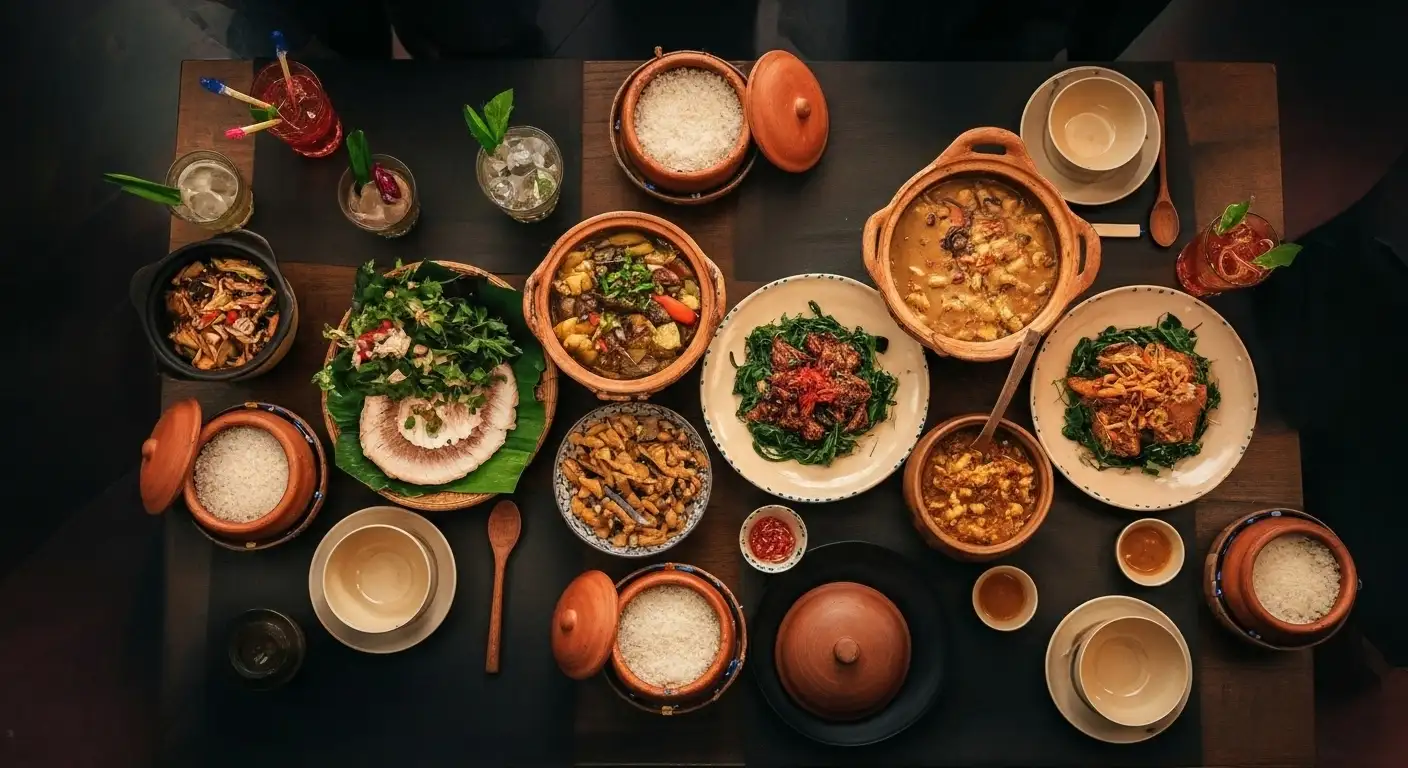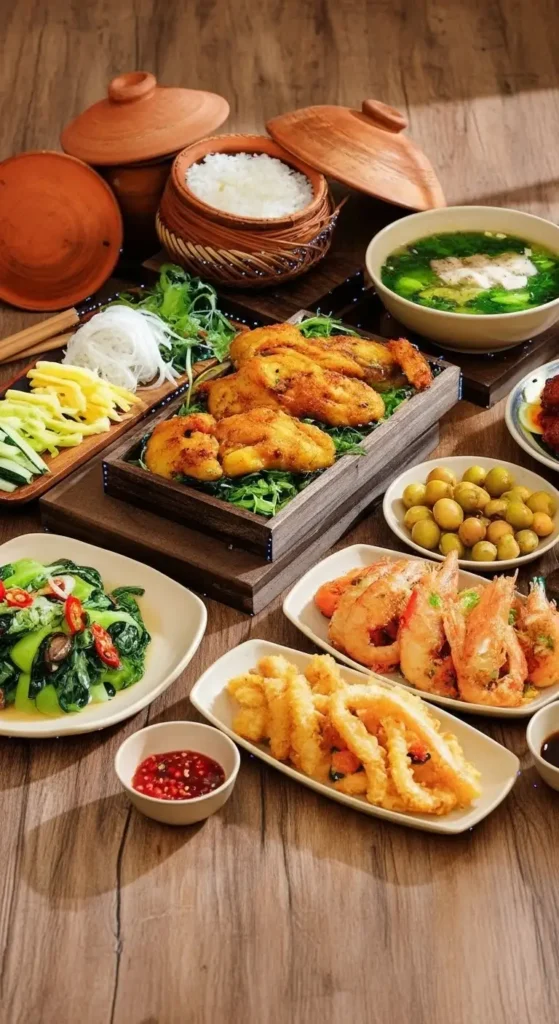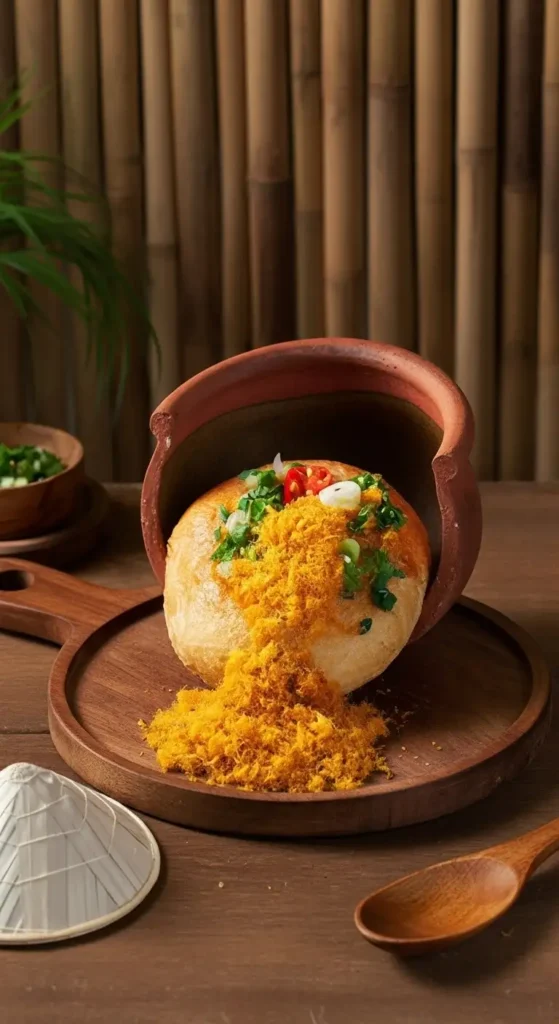Cơm Niêu (pronounced “Kuhm Nee-oo”) is more than just a dish; it is a profound cultural symbol of traditional Vietnamese family meals. Cơm means “cooked rice,” and Niêu refers to the small, round, unglazed clay pot in which the rice is prepared.
This method of cooking rice over a wood or charcoal fire—instead of a modern electric cooker—infuses the grains with a distinctive smoky fragrance and creates the much-loved crispy layer known as cơm cháy (burnt rice) at the bottom. Dining on Cơm Niêu transports one back to the simple, authentic flavors of a Vietnamese grandmother’s kitchen.
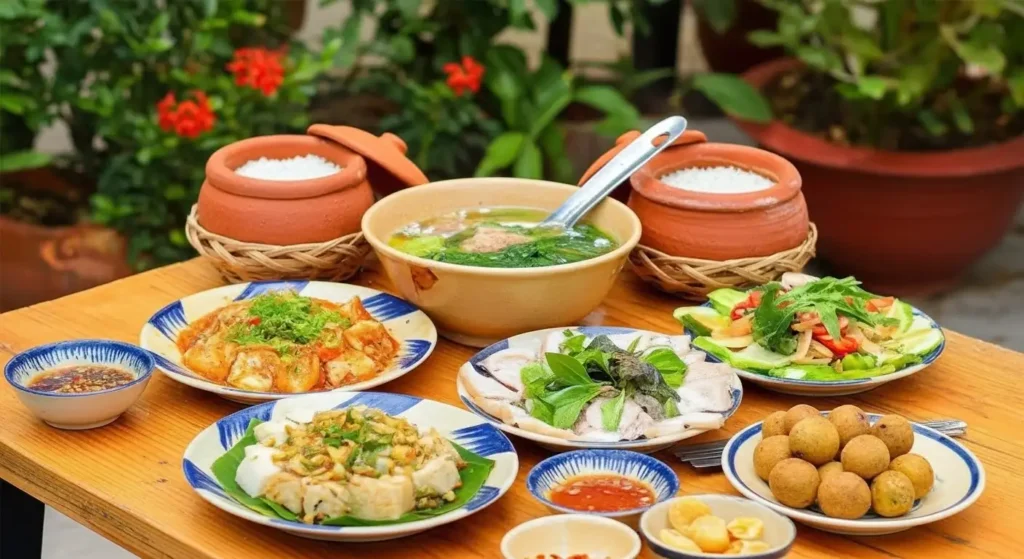
Cơm Niêu: The Basics
The Vessel: The defining element is the small, round clay pot (niêu). The porous nature of the clay and the slow, intense heat from the fire are crucial for achieving the rice’s unique texture and flavor.
The Rice: High-quality, fragrant long-grain white rice (like Jasmine or Tám Xoan rice) is traditionally used.
The Process: Rice and water are placed in the niêu, which is then cooked over a wood or charcoal fire. The cook carefully manages the temperature to steam the rice perfectly while intentionally scorching the rice at the pot’s bottom.
The Texture: The final product offers two distinct textures:
Soft, fluffy, and fragrant white rice on the top and in the middle.
Cơm Cháy (Scorched Rice): A thin, crispy, golden-brown crust of rice at the very bottom, which is considered a delicacy.
Types and Accompaniments of Cơm Niêu
Cơm Niêu is simply the rice component of a traditional family meal, and it is always served with a variety of savory side dishes (món ăn mặn), a vegetable dish, and a soup.
| Popular Side Dishes Served with Cơm Niêu | Description | Regional Influence |
|---|---|---|
| Cá Kho Tộ | Braised Fish in a Clay Pot. A classic pairing. Fish (often catfish or snakehead fish) is caramelized in a thick, rich, savory-sweet sauce made from fish sauce, sugar, and black pepper. | Universal across Vietnam, but especially popular in the South (Mekong Delta) where fish is abundant. |
| Thịt Kho Tiêu | Braised Pork with Black Pepper. Cubes of fatty pork belly are slow-cooked in a dark, sticky, caramelized sauce. | A staple of almost every Vietnamese home, cherished for its richness. |
| Rau Muống Xào Tỏi | Sautéed Morning Glory with Garlic. A common, simple, and essential vegetable dish that offers a fresh, garlicky contrast to the rich, savory main dishes. | Popular in all regions. |
| Canh Cua / Canh Chua | Soup. A simple, hot soup (like a refreshing crab soup or a tangy/sour fish and vegetable soup) is served to balance the dry rice and rich main dishes. | Soups vary widely by region, often featuring local vegetables and proteins. |
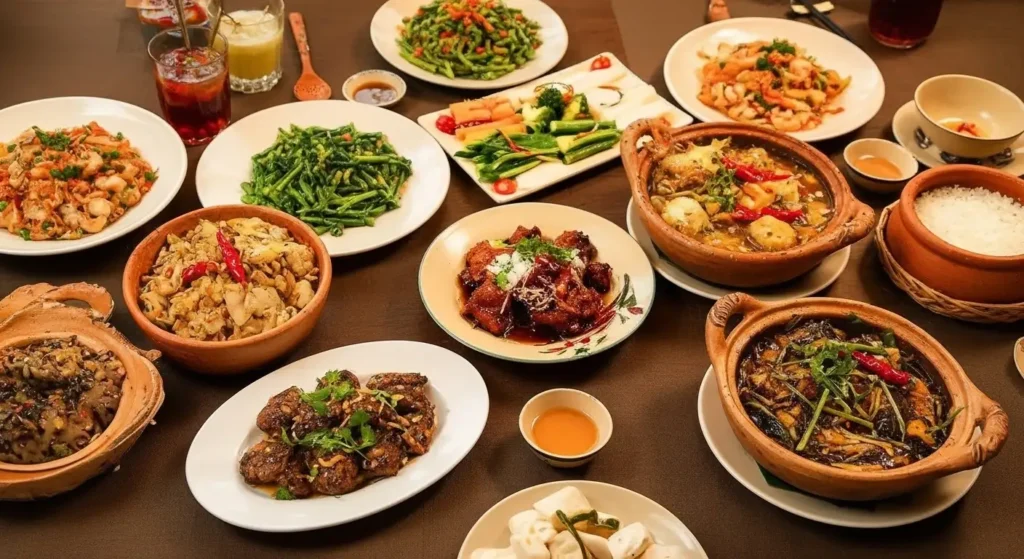
How to Eat Cơm Niêu
The presentation of Cơm Niêu is part of the dining ritual, particularly at specialty restaurants.
Serving the Rice: At a traditional Cơm Niêu restaurant, the entire clay pot is often brought to the table. The rice is then expertly scooped out, leaving the crispy cơm cháy at the bottom.
The “Smashing Rice” Ritual (Cơm Đập): In some Southern restaurants (especially in Saigon), the crispy cơm cháy is scraped out, flattened into a large disc, and then ceremoniously smashed (đập) before being served in pieces. These crispy, savory rice chips are often topped with scallion oil (mỡ hành) and eaten like a snack.
Family Style: Cơm Niêu is meant to be eaten communally. Diners take portions of the soft rice from a central bowl, and use it as a base for a spoonful of the braised fish or pork and a sip of soup, creating a perfect balance of textures and flavors in every bite.
Utilizing the Crispy Rice: The cơm cháy is delicious dipped in the sauce of the Cá Kho Tộ or Thịt Kho Tiêu, where it absorbs the rich caramelization.
Regional Differences in Cơm Niêu (Accompaniments)
While the cooking technique for the rice itself remains constant (rice in a clay pot), the accompanying dishes change dramatically, reflecting the distinct culinary palettes of North, Central, and South Vietnam.
| Region | Culinary Profile (General) | Cơm Niêu Accompaniments & Differences |
|---|---|---|
| Northern Vietnam (Hanoi) | Subtle, Balanced, Savory. Favors clean, refined flavors and less sugar. | Accompaniments are milder and less sweet. Dishes like Giả Cầy (pork trotters stewed with fermented rice) or simple braised fish with less sugar are common. The focus is on the purity of the ingredients. |
| Central Vietnam (Huế/Đà Nẵng) | Bold, Spicy, and Salty. Known for its strong flavors, heavy use of chili, and meticulous presentation (due to royal cuisine influence). | Dishes served with Cơm Niêu are often spicier and saltier. They utilize local seafood and stronger fermented sauces. The rice may be paired with smaller, more intensely flavored dishes to complement the bold spices. |
| Southern Vietnam (Saigon) | Sweet, Rich, and Diverse. Embraces a generous use of sugar and coconut milk. | The Cá Kho Tộ and Thịt Kho Tiêu served here are distinctly sweeter and richer, often cooked with coconut water for extra sweetness and tenderness. The "smashing rice" ritual (Cơm Đập) is a particularly popular, energetic Southern addition to the dining experience. |
